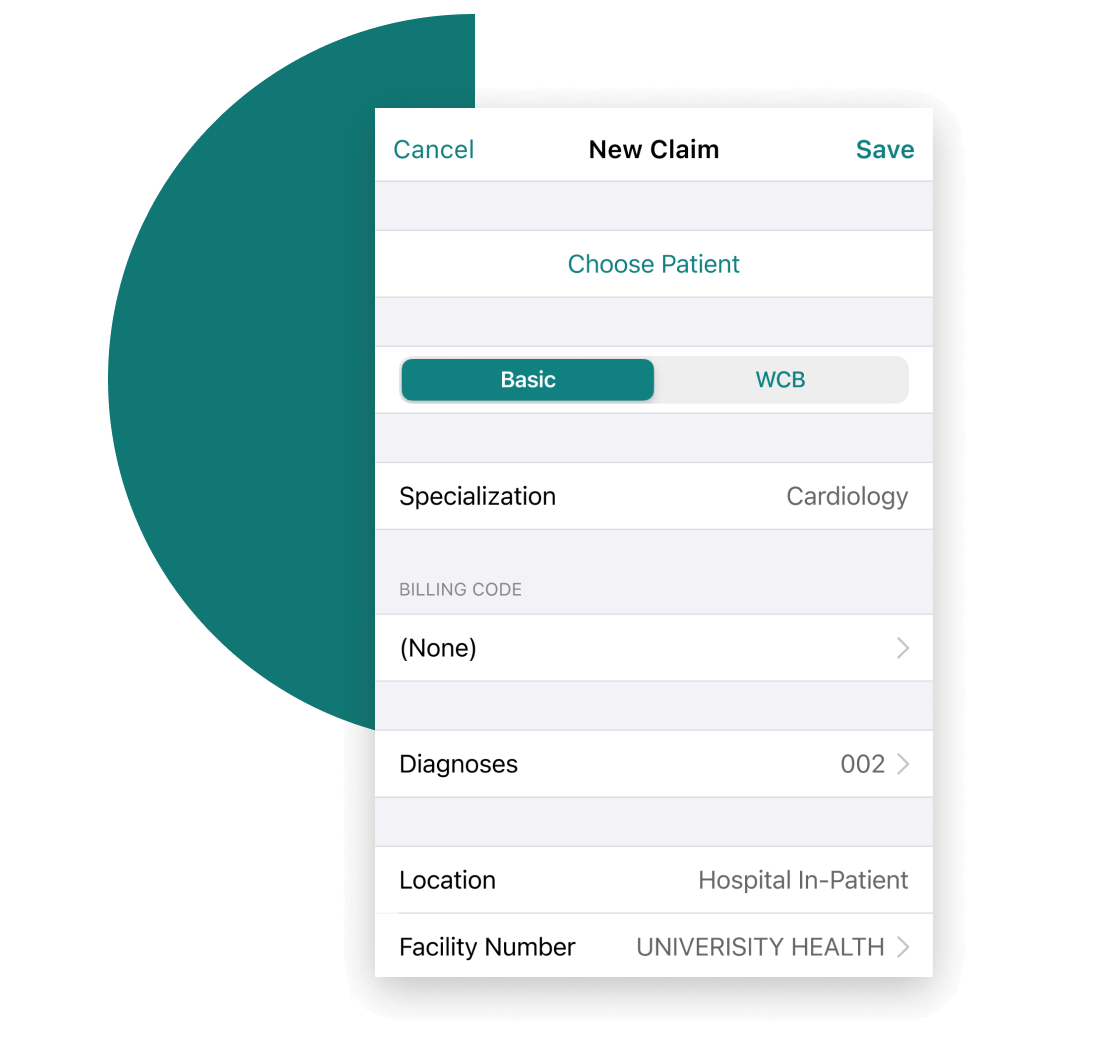By definition, disruptive technology is an innovation that significantly alters the way that consumers, industries, or businesses operate. Disruptive technology is gradually changing the face of healthcare and technology as we know it – as it evolves technology that eases many pain points for patients and healthcare professionals. For example, big data (a collection of data that is huge in volume, and continues to grow aggressively with time) is helping healthcare organizations identify patterns and stay better equipped by helping them study the past data and align it with their present and future needs. Big data, along with other new technologies such as VR, robotics, and AI (artificial intelligence) are having such a huge impact on the healthcare industry that surviving without them seems almost impossible now.
These new technologies are going beyond just helping healthcare professionals – they’re promoting the overall wellness of the general population. For example, wearable devices are helping people track how many calories they’re burning, how much exercise they’re getting, what are the oxygen levels in their body, and more. This helps create an environment of prevention instead of treatment. It also allows for faster communication, better data analysis, convenience, etc.
Outlined in this article, we take a closer look at what is disruptive technology in healthcare and how it affects the quality of diagnostics, treatments and delivery of care in the future.
1. 3D Printing
3D printing has shown enormous potential in healthcare. 3D printing as a technology is evolving rapidly reducing the costs of manufacturing (or, well, printing) prototypes, prosthetics, skin and tissue, and more.
3D printing is helping both doctors and patients as the former is able to give better quality care that their patients need and deserve. For example, when it comes to prosthetics, 3D printing can help create custom designs for each patient. It’s also drastically improving the organ transplant process where doctors today are using stem cells to create organs. Burn victims are using 3D printed skin and some doctors are even using their patient’s plasma and skin biopsies to create new human skin – instead of using skin grafts as they can be painful and not as visually appealing.
Another medical sector that’s reaping the maximum benefits of 3D printing is radiology. Today, you can turn a normal 2D CT scan into a 3D model. This gives doctors a more comprehensive and full view of the problem and ensures that they don’t miss out on any detail that they may have gotten on a 2D scan. It also helps them better explain the condition to the patient and describe how the treatment plan will cure their problem.
2. Lasik Treatment
Who wouldn’t want to get rid of their eyeglasses! Laser technology has made it easier for physicians to help their patients completely eliminate their dependency on eyeglasses or contacts and elect for a more permanent vision-correction solution. The technology and procedure are quite affordable making it easily accessible to a larger audience.
The procedure uses specialized lasers that modify the eye. A surgeon uses this technology to cautiously reshape the patient’s cornea, correcting common vision problems like nearsightedness (myopia), farsightedness (hyperopia), and astigmatism. In fact, according to the latest research, Lasik has a 99% success rate in achieving 20/40 vision or better, and a 90% success rate in achieving 20/20 vision or better.
The consistent development in this disruptive technology has improved the overall efficiency of this elective procedure and made it possible for people to have clear vision sans contact lenses.
3. Augmented Reality
Augmented Reality is yet another strong answer to what is disruptive technology in healthcare. It compliments reality with images and sounds and creates its own type of extended reality. The healthcare industry is using it mainly for its educational benefits. For example, immersive technologies such as AR also are helping improve empathy between patients and their caregivers and helping in understanding the treatment of diseases.
As for doctors, whether you’ve been in the industry for decades or someone who’s just getting started with their medical career, augmented reality helps you better understand and perform procedures on a 3D model of a human body. This helps you focus on the task, identify gaps, scope out possible errors, and become more equipped to handle the real thing.
Another benefit of augmented reality is it helps you show your patient how to exactly apply their medication or wash and dress their wound. In the long run, this technology will significantly enhance the quality of education which will lead to preventative health and fewer errors.
4. Precision Medicine
As doctors, you know that every patient is unique and in certain instances, they demand unique treatments. Essentially, precision medicine looks at a patient’s environment, lifestyle, genetic makeup and based on this data provides preventative measures/treatments. This method is very different from the blanket, all-purpose approach to treating illness, such as cancer and cystic fibrosis.
There could be a variety of genetic and environmental factors that have caused a patient to develop certain conditions/diseases. Precision medicine can be prescribed by studying those factors and through molecular genetic testing. Not only can this technology help doctors treat a certain condition, but it can also help them prevent the onset of severe illnesses.
So, how does precision medicine really work? Genome sequencing helps shed light on DNA mutations that a patient might be vulnerable to. This information allows doctors to come up with a more precise treatment plan to either cure the disease or minimize its damage.
“In the next 30 years, for example, someone with type 2 diabetes will be immediately placed on the medicine that is best suited for their genetic predisposition, their ethnicity, their age, their sex, and the duration of time they’ve had the disease. They’re not going to have to try one therapy, and if that doesn’t work, try another, and another.” – Suneil Koliwad, MD, Ph.D., the Gerold Grodsky Professor at UC San Francisco’s Diabetes Center
As this technology evolves, it’ll enable preventative health and reduce the time and money spent on treatment and offer better, more personalized care to patients in the future.
5. Immunotherapies
Tumours and cancer are huge challenges for healthcare professionals. According to statistics, cancer is the leading cause of death in Canada with Canadians having about a 24 percent lifetime probability of dying from some form of cancer. Immunotherapy focuses on therapeutic benefits by concentrating on the abilities of the immune system. The technology charts new territory where it identifies the individual duration of survival and also all the potential patients who can be benefitted.
For example, the most common types of new cancer cases in Canada in 2020 included lung and bronchus, breast, and colorectal. These diseases have limited treatment options. Immunotherapy works in a way where it studies a broad level of patient populations to understand various factors that trigger the body to react in a certain way. Once it’s able to identify a pattern or an algorithm that can be effectively used to reduce the risks of cancer, it can offer much better treatment options to cancer patients.
While this technology is still in its nascent stage, there have been some promising approaches which include new molecular constructs, possible combinations of old and new drugs, and vaccines.
Conclusion
The disruptive technologies mentioned above have tremendous potential to transform the healthcare industry in the future. Most of these technologies are still in their infancy stage and professionals are working to identify ways they can maximize their potential. Despite being relatively new, these technologies are disrupting the healthcare industry. There’s still a long path ahead on how these technologies will be made available to the larger audience and integrate into daily operations. But one thing’ for sure–as the industry grows, so will the use of these technologies which will benefit everyone.
This article offers general information only and is not intended as legal, financial or other professional advice. A professional advisor should be consulted regarding your specific situation. While information presented is believed to be factual and current, its accuracy is not guaranteed and it should not be regarded as a complete analysis of the subjects discussed. All expressions of opinion reflect the judgment of the author(s) as of the date of publication and are subject to change. No endorsement of any third parties or their advice, opinions, information, products or services is expressly given or implied by RBC Ventures Inc. or its affiliates.

Solutions Designed For The Unique Needs Of Your Practice
Get a $150 Credit when you sign up for Dr.Bill*. No credit card required.






